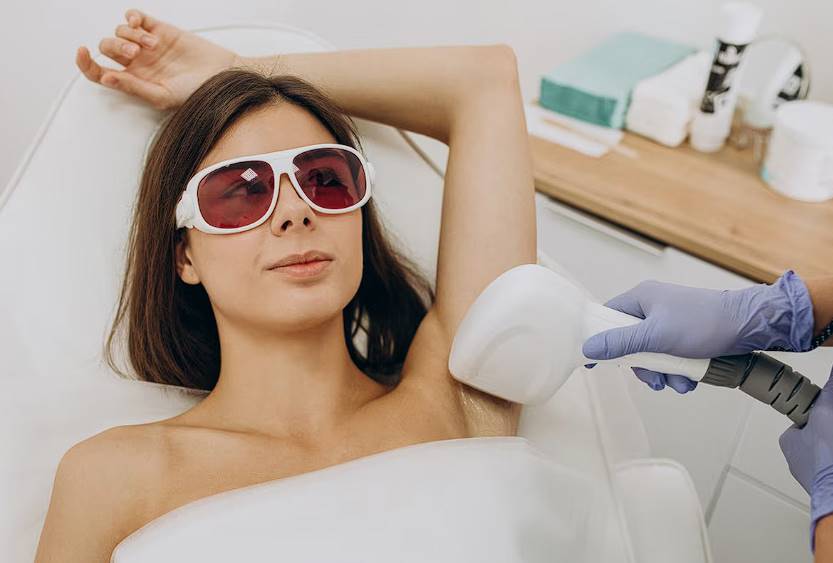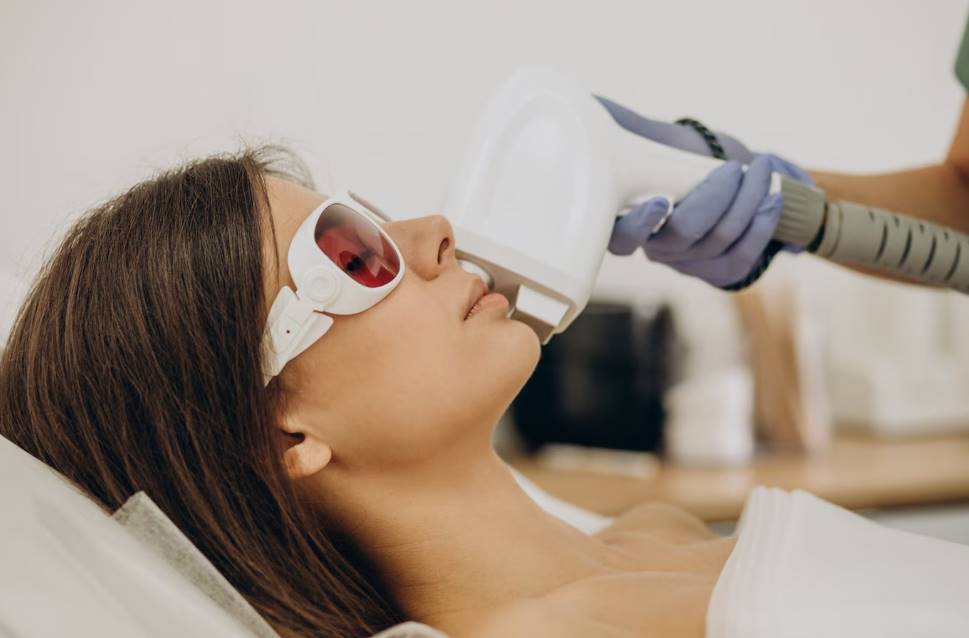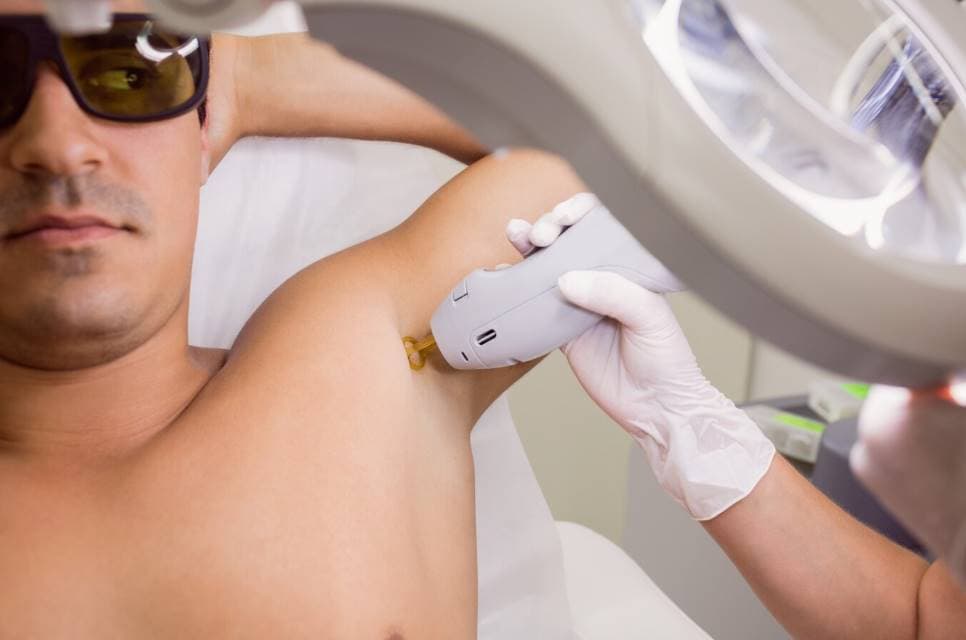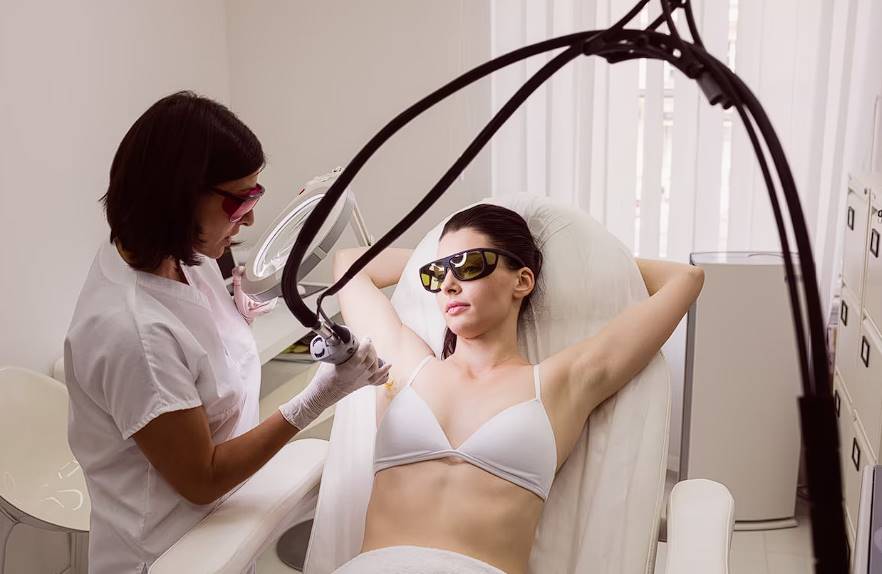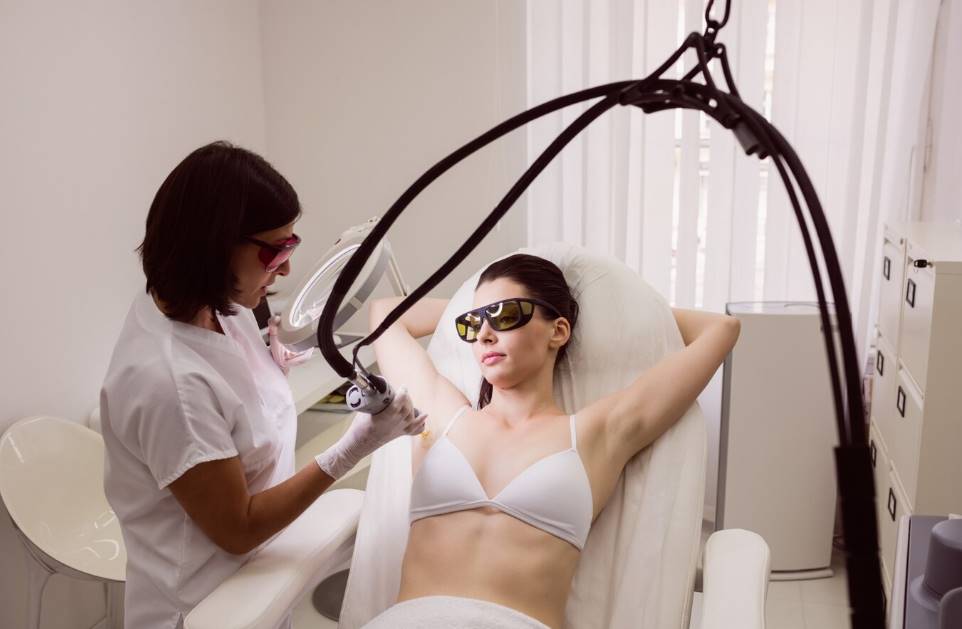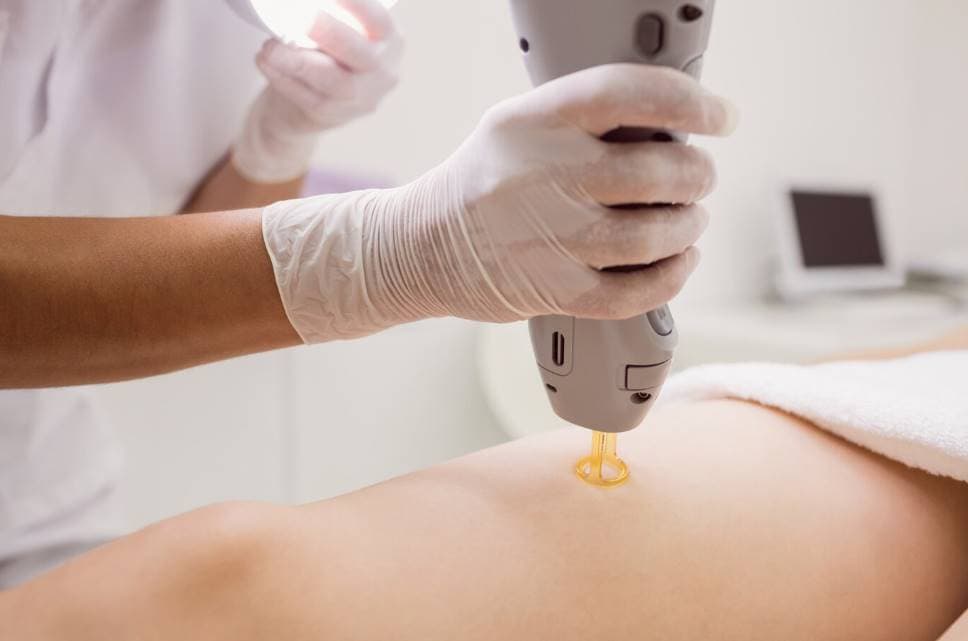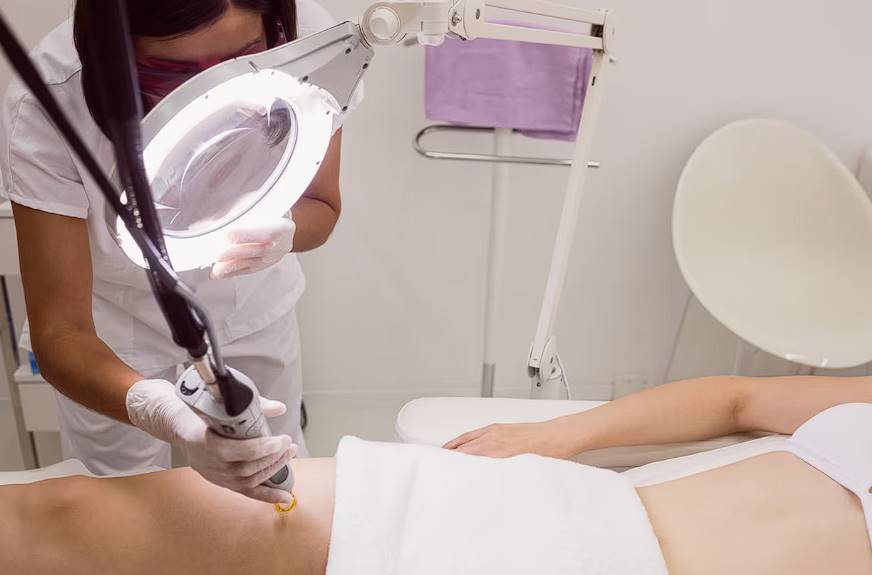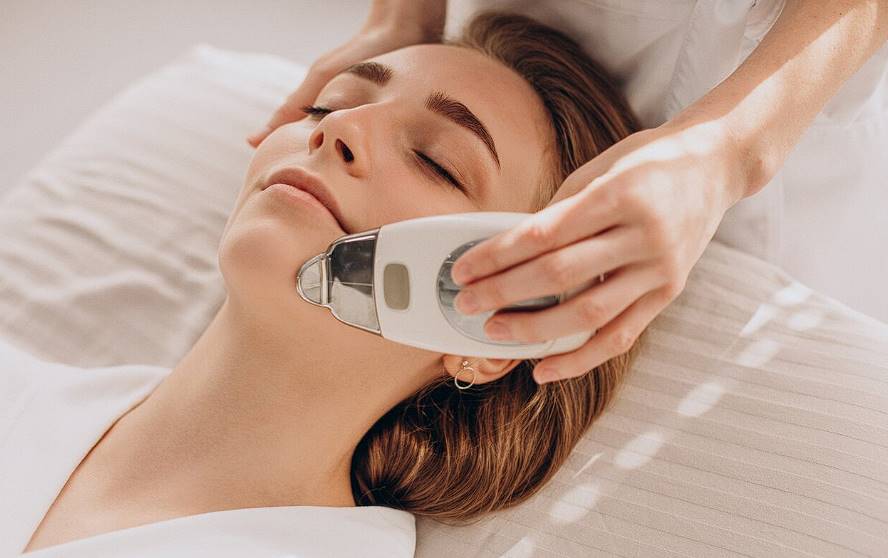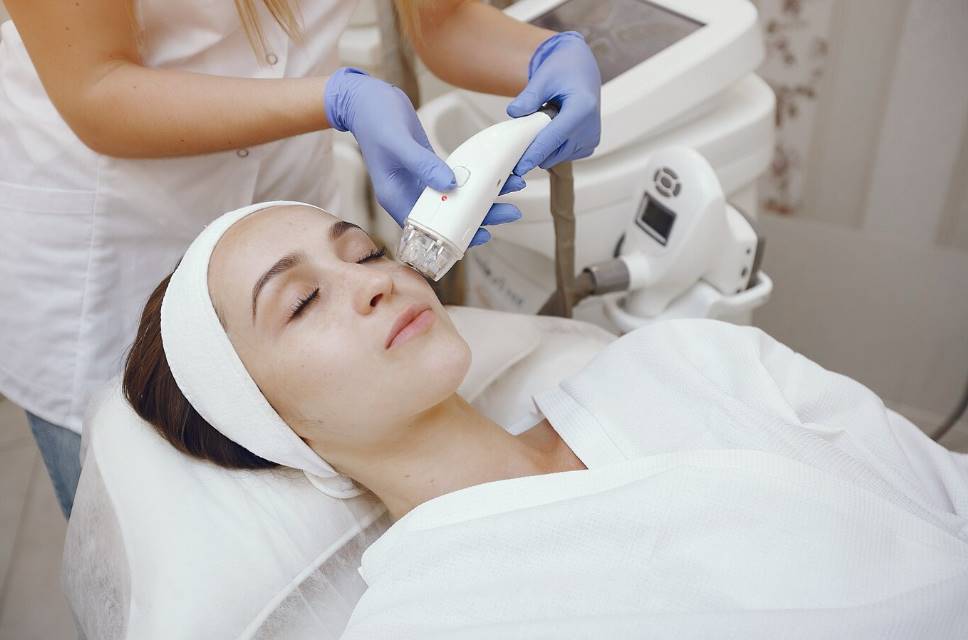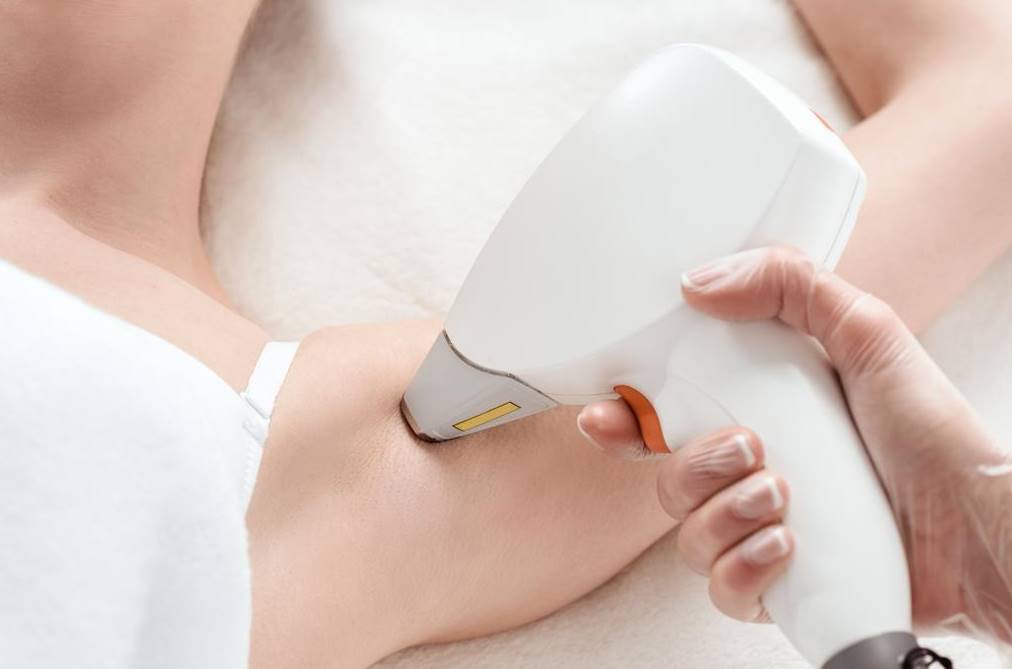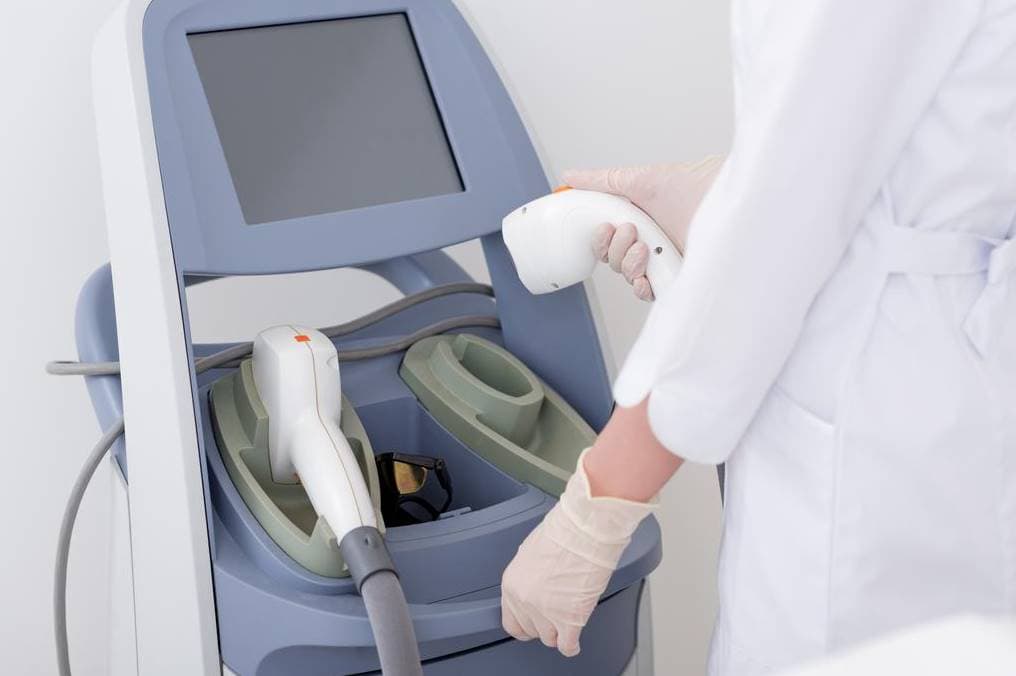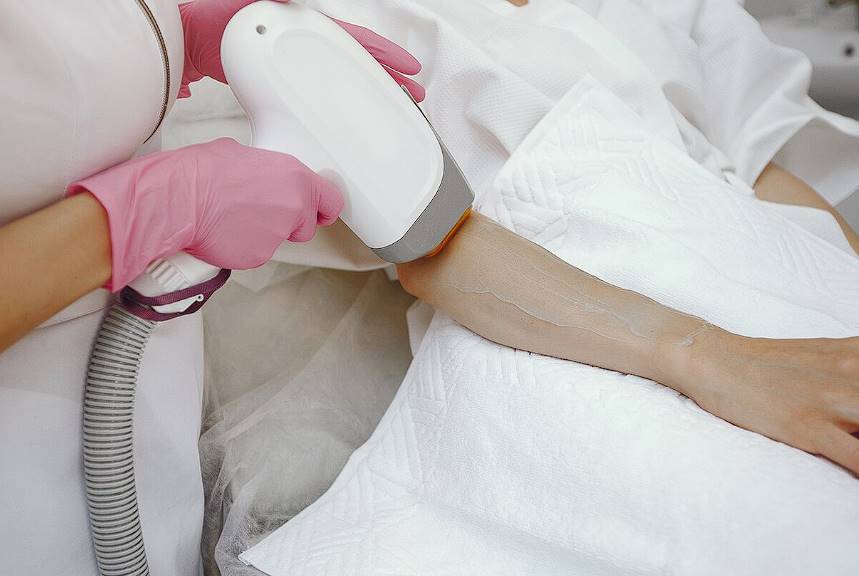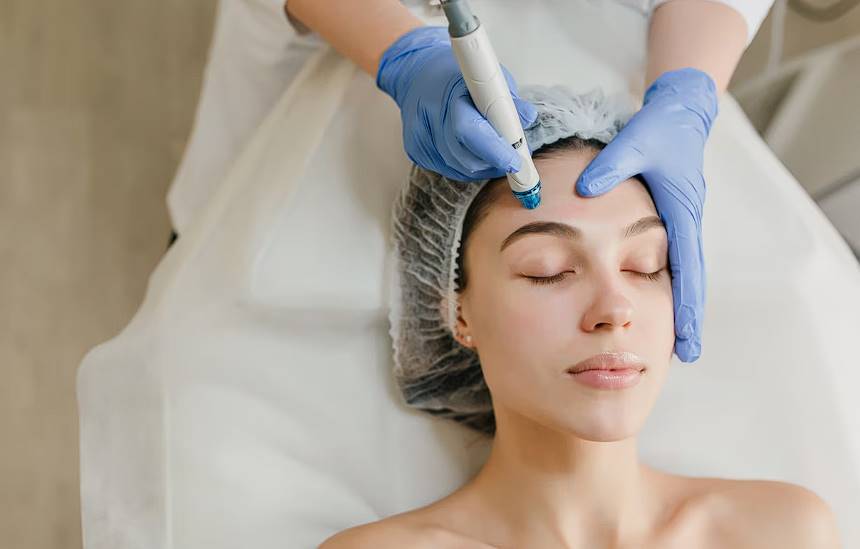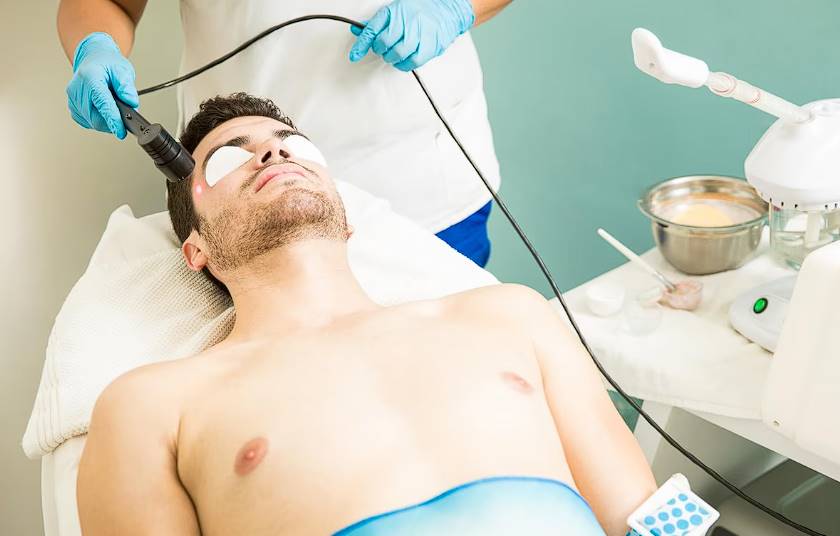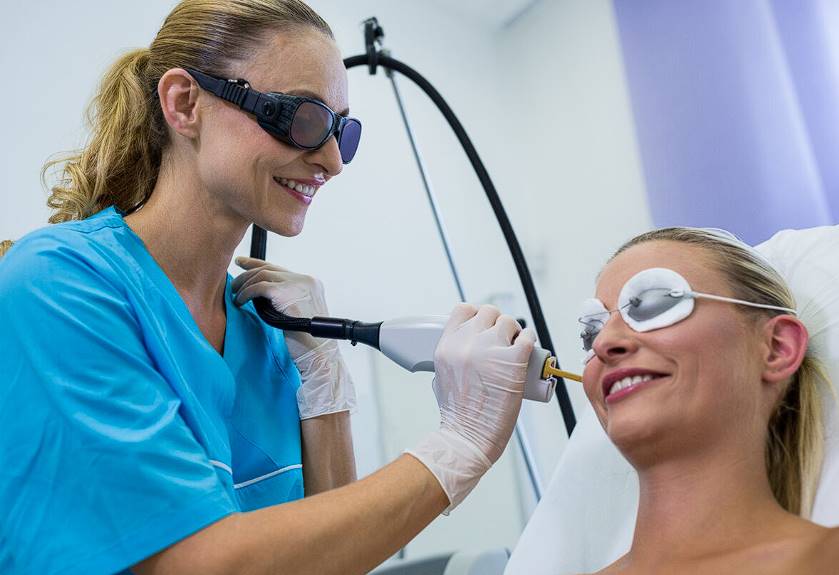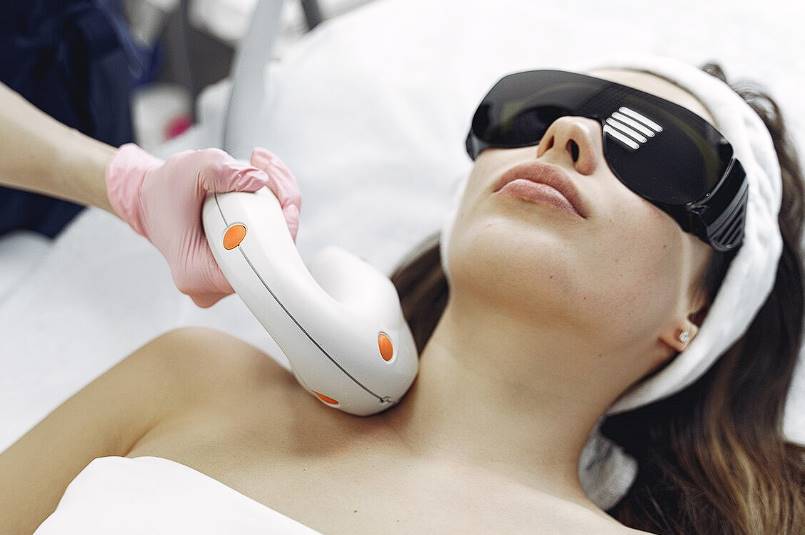Choosing to begin laser hair removal treatment is significant. However, the sooner you begin, the sooner you'll realise fantastic outcomes.
You could try laser hair removal to see if it helps. Due to its effectiveness in producing semi-permanent hair removal, this non-invasive therapy has garnered enormous appeal. To help you make an educated decision, let's first look at the pros and cons of laser hair removal.
In this post, we'll discuss the benefits and risks of laser hair removal so that you may make a well-informed decision.
With the correct information, you can make an educated choice and finally get that silky, hair-free skin you've always wanted.
Learn the Basics of Laser Hair Removal
Hair follicles are the intended target of the medical technique known as laser hair removal.
The laser's light is of a particular wavelength, absorbed by the hair's pigment. Because of this, hair development is stifled, but the skin around the follicles remains unharmed.
The procedure's versatility means it may be used on various body parts, from the face and neck to the legs and underarms to the bikini line.

How Does Laser Hair Removal Work?
If performed by a qualified laser specialist, hair removal with a laser is a quick and painless process.
The procedure is as follows:
A trained professional directs Laser light to the area with excess hair. The laser's light pulses penetrate the hair and harm the follicle, killing the hair follicle and thereby ending the lifespan of hair.
There are three stages of hair growth, and the laser can only properly kill the root when the hair is actively growing.
The heat from the laser kills cells that are highly pigmented. Dark hair, which has more pigment, is better at retaining warmth. The heat from the hair prevents new hair follicles from forming. For the operation to be effective, the hair follicle must be in the anagen phase.
This is why a series of treatments is usually necessary. To get pictures of every hair in this stage of development, you'll need to schedule many appointments about four weeks apart.
Can Anyone Have Laser Hair Removal Done?
Laser hair removal is an option for everyone with abundant unwanted hair. It's primarily used for aesthetic reasons. It could help you feel better about how you look. In addition, many people would rather not have to shave every day.
Sometimes, excessive hair growth can be treated with laser hair removal.
Hirsutism refers to the condition in which a woman develops hair in places typically occupied by men. Both sexes are equally susceptible to hypertrichosis, or excessive hair growth.
These symptoms may stem from the following:
- Drugs like anabolic steroids and hormonal contraceptives fall under this category.
- High amounts of testosterone or other androgens indicate a hormonal imbalance.
- Diseases passed down from generation to generation in a person's DNA are called inherited illnesses.
- Have polycystic ovary syndrome.
- Hormone-making tumours.
Thicker, darker hair and fair complexion are ideal for laser hair removal. The latter can soak up more heat because of the colour difference between the skin and hair. Blondes, greys, whites, and redheads may not see the same results.
In What Cases Is Laser Hair Removal Not Recommended?
Before electing to get laser hair removal, you should talk to your doctor. In the cases below, you should not go through with the procedure
- You're expecting
- You are taking certain medicines, like acne treatments.
- You either suffer from genital herpes (HSV-2) or are prone to getting cold sores.
- You're experiencing the occurrence of keloid scars.
- Your skin has cancer, or you once did.
When Should I Have Laser Hair Removal Done?
With the right equipment, laser hair removal is effective for nearly everybody.
Newer lasers are more attuned to the need for discernible contrast between skin tone and colour, so there's no need to worry about that. We advise against beginning laser hair removal during hormonal transitions, including pregnancy, nursing, adolescence, or menopause.
Laser hair removal works best when you won't be actively tanning for a while afterwards. As a result, you should spend the next five months avoiding direct sunlight.
Is Laser Hair Removal Permanent?
Laser hair removal can provide long-term hair reduction, but it is not always completely permanent. Some hair follicles may become dormant over time and reactivate, leading to minimal hair regrowth. Periodic maintenance sessions may be necessary to maintain the desired results.
Advantages of Laser Hair Removal
The advantages of using a laser to get rid of unwanted hair are extensive. Below are some examples:
Effective and Timely Remedy
Laser hair removal is the quickest method of permanently removing unwanted hair. You'll need to attend numerous sessions, but each session won't take long. The time spent under the laser will be reduced in proportion to the size of the treatment area.
If the hair follicles are killed, the hair won't come back. In other words, you can finally end unsightly hair and enjoy long-lasting effects.
Reduces Pain Compared to Other Hair-Removal Techniques
Most people's fears about the discomfort of laser hair removal are unfounded. Many have likened the feeling to that of a rubber band cracking against the skin.
It may be moderately uncomfortable, but most individuals don't mind because the treatments are short.
Easy to maintain
Anyone looking for a long-term answer to the problem of unwanted hair should consider laser hair removal. Retouching once a year is advised, but that's much faster than daily shaving.
Almost no adverse effects
Improvements in laser technology have made these procedures less uncomfortable and more successful while lowering the risk of complications. Follicular edema, often known as follicle redness, is the most prevalent adverse effect.
Capable of Suppressing Hair Growth Anywhere on the Body
Laser hair eradication is possible everywhere except of course, eyelashes. It's great for areas uncomfortable to wax and challenging to reach with a hair razor, such as the back and bikini line.
Keeps Hair From Growing Inward
Ingrown hairs are often the result of hair removal treatments like shaving, waxing, and electrolysis. Laser hair removal may be your solution if ingrown hairs are a persistent problem.
Root destruction stops hair growth and ingrown hair curling.
Keeps You From Needing to Go Through Regrowth
Waxing and plucking are two treatments that leave you with some regrowth between appointments. Laser hair removal allows for the achievement of hairless skin.
A Safer Technique
Technology improvements have made laser hair removal safe for people with dark skin. And you may rest assured that you won't suffer any more razor burns, which can leave permanent scars.
Enhances The Appearance Of Skin
Laser treatments can lessen the frequency and severity of acne breakouts and decrease hair. The skin's tone and texture can be enhanced, and scarring from irritation can be avoided.
What Are the Risks Of Laser Hair Removal?
Possible laser hair removal adverse effects include:
- Burns.
- Blisters.
- Scars or Hyperpigmentation.
- Hypopigmentation.
- Infections.
- Outbreaks of herpes.
Alternative Hair-Removal Techniques
Each method of permanently removing unwanted face and body hair has advantages and disadvantages.
Although all three approaches are viable, those seeking a permanent hair removal solution should choose laser treatment.
Electrolysis
Electrolysis removes hair permanently. This technique employs the insertion of a skinny needle into the hair follicle, where the hair is killed at the root and prevented from growing again.
Electrolysis removes hair one follicle at a time, while laser hair removal eliminates a group of hairs all at once.
Electrolysis is a painful and time-consuming process. The number of needles you'll have to endure depends on the size of the treatment area.
Waxing
Compared to others, waxing is among the most unpleasant. Even though it removes hair follicles, you'll need to wait for new growth before you may wax. It's not a good choice for those who prefer perpetually hairless skin.
Hair Removal Lotions
Although they do the job swiftly, depilatory creams might leave a sticky residue. They also include toxic compounds.
Redness and burning are common side effects of depilatory creams, especially for sensitive skin.
Epilators
While epilators make hair removal simple, some people find the process unpleasant. When attempting hair removal from a sizable area, the time commitment required to use an epilator regularly is comparable to other hair removal treatments.
Hair Removal Lotions
Although they do the job swiftly, depilatory creams might leave a sticky residue. They also include toxic compounds.
Redness and burning are common side effects of depilatory creams, especially for sensitive skin.
Shaving
The most frequent hair removal method is shaving, which requires constant upkeep for the results to last. It hurts nothing to shave, but razor burn and ingrown hairs can be uncomfortable and unattractive.
The back, for example, is a challenging place to shave.

What to Anticipate From Your First Laser Hair Removal Appointment?
Patient-specific adjustments will be made to the laser equipment, and protective eyewear will be provided. A cold gel or cooling device may shield exposed skin during therapy.
Light pulses will be supplied to the affected area during the laser procedure, which may cause discomfort. This feels like a rubber band snapping or a warm pinprick. The pain from the first treatment usually subsides after the second.
Given the size and extent of the affected area, the therapy can last anywhere from a few seconds to an hour or more. After it's done, you may be offered pain relievers, including ice packs, anti-inflammatory creams, and lotions.
When Can I Expect to See Changes?
The cumulative effects of your treatments will become apparent after a certain number of iterations. The first noticeable change, usually after only a couple of treatments, is gradual hair thinning. Hair follicles treated with chemicals typically take many days to weeks to shed entirely after they have been weakened. Growth may continue because the hairs don't come out immediately.
The density and thickness of your hair may affect the overall result. Hair regrowth can be slowed by laser hair removal for months to years, although it isn't always successful in eliminating hair.
After the first session, you should anticipate a 10% to 25% hair reduction. There is typically a requirement for 2-4 laser treatments. After treatment, most patients report no hair growth for months or years, with the hair that does sprout being thinner and lighter.
Conclusion
Laser hair removal inhibits hair growth by targeting hair follicles without harming the skin. Laser specialists can execute it quickly and painlessly. Laser light kills the hair follicle and ends its life. The laser can only kill the root throughout the hair's three development stages.
The laser heat kills highly pigmented cells, and dark hair retains heat better. Multiple treatments are needed to get the hair follicle into the anagen phase for the surgery. Results vary for blondes, greys, whites, and redheads.
Laser hair removal can improve look and self-esteem for anyone with excessive unwanted hair. It can also treat hypertrichosis, when women grow hair in male areas.
To avoid pregnancy, hormonal changes, and skin cancer, visit a doctor before laser hair removal. Laser hair removal works best after a break from sunbathing and should be avoided during hormonal changes.
Some hair follicles become dormant and reawaken, causing minimal hair regrowth after laser hair removal. Maintaining results may need maintenance sessions.
Laser hair removal is fast, painless, easy to maintain, and can restrict hair growth anywhere on the body. It's safer and can improve dark skin.
Laser hair removal can cause burns, blisters, scars, hyperpigmentation, hypigmentation, infections, and herpes. Laser hair removal is a non-invasive, efficient hair removal method. For optimum outcomes, see a doctor before this treatment.
Waxing, epilation, shaving, and laser treatments remove hair. Depilatory lotions work quickly but leave a sticky residue and harmful chemicals. Simple epilators can irritate sensitive skin. Laser hair removal uses light pulses, patient-specific modifications, and protective eyewear. The second treatment reduces pain.
After a few cycles, treatment effects will accumulate. Hair thinning occurs gradually over days to weeks. Laser hair removal slows hair development for months to years but doesn't always eliminate it. Most patients report minimal hair growth for months or years after the initial session, with the hair that grows being thinner and lighter.
Content Summary
- Laser hair removal offers relief from the repetitive process of shaving or waxing.
- It is a risk-free and efficient method for permanent hair removal.
- The therapy has improved to accommodate people with darker skin tones.
- Laser hair removal targets the hair follicles using a beam of light.
- The laser's energy transforms into heat, damaging the hair follicles and preventing new hair growth.
- It can be used on various body parts like face, arms, legs, and bikini lines.
- The process is usually carried out by licensed medical professionals.
- Effective laser hair removal requires an understanding of hair growth stages.
- Laser hair removal employs selective photothermolysis for targeted treatment.
- Melanin in the hair absorbs the laser light while protecting the surrounding skin.
- The number of sessions required depends on the size of the target area.
- The treated hairs fall out after about two weeks, and new growth starts after four weeks.
- Multiple sessions are needed to target hair follicles in different growth phases.
- A series of five treatments is recommended for new patients.
- Laser hair removal can be nearly permanent, but hormonal shifts may cause new hair growth.
- Some individuals may experience discomfort during the procedure, which can be minimized with topical anesthetics.
- Proper preparation includes avoiding sun exposure and shaving the treatment area.
- A patch test helps determine the appropriate laser settings and potential adverse reactions.
- Aftercare involves avoiding hot water and using cold compresses to alleviate symptoms.
- Sunscreen with SPF 50 should be applied to the treated area when going outside.
- Regular check-in visits with a dermatologist are advised to monitor progress and address concerns.
- Showering is allowed after treatment, but gentle cleansing and patting dry are recommended.
- Hair loss may occur within 5 to 30 days after therapy, and shedding hair can be gently removed with a damp washcloth.
- Laser hair removal is an ideal solution for long-lasting hair reduction.
- It is relatively painless compared to other hair removal techniques.
- Laser hair removal saves time and money compared to temporary methods like shaving and waxing.
- The procedure is effective in reducing ingrown hairs and preventing hair growth in treated areas.
- Laser hair removal is suitable for various skin types and offers enhanced appearance benefits.
- Possible risks include burns, blisters, scars, and hyperpigmentation.
- Other hair removal techniques like electrolysis, waxing, and shaving have their advantages and disadvantages.
Frequently Asked Questions
Laser hair removal is a cosmetic procedure that uses concentrated beams of light (laser) to target and destroy hair follicles. The laser emits a specific wavelength that gets absorbed by the pigment in the hair, effectively disabling the follicle and preventing future hair growth.
- Long-lasting results: Laser hair removal offers a long-term reduction in hair growth, providing smoother skin for an extended period.
- Precision and speed: The procedure can target specific areas precisely and is relatively quick, depending on the size of the treatment area.
- Less discomfort: Laser treatment is generally less painful and causes minimal discomfort than other hair removal methods.
- Versatility: Laser hair removal can be used on various body areas, including the face, legs, underarms, bikini lines, and more.
- Reduced ingrown hairs: This method can help decrease the occurrence of ingrown hairs, a common issue with shaving and waxing.
Generally, individuals with light skin and dark, coarse hair tend to respond best to laser hair removal. However, technological advancements have allowed people with various skin and hair types to benefit from the procedure. Consulting with a qualified professional can determine if you are a suitable candidate based on your unique circumstances.
- Skin irritation: Some people may experience temporary redness, swelling, or mild discomfort in the treated areas.
- Pigmentation changes: In rare cases, laser hair removal may cause temporary or permanent changes in skin colour, particularly for individuals with darker skin tones.
- Blistering and scarring: Although uncommon, improper treatment or sensitive skin can lead to blisters and, in extreme cases, scarring.
- Eye injury: Safety measures, such as wearing protective goggles, are crucial to prevent accidental laser exposure to the eyes, which can cause severe damage.
Laser hair removal is generally safe when performed by a trained and experienced professional. Following pre and post-treatment care instructions is essential to minimise potential risks. Choosing a reputable and licensed clinic is crucial to ensure the best and safest results.

